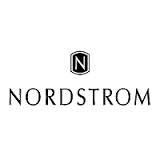Gross margin and inventory turnover both help show how well a department store’s doing, but each metric has weaknesses when used alone. A high margin doesn’t mean as much when clothing sits on the shelf for months. High turnover doesn’t mean as much when the store barely earns a profit, or even incurs a loss, on the clothing it sells. The gross margin return on investment metric, or GMROI, considers both margins and turnover.
Gross profit
The final GMROI formula is gross profit divided by average inventory. The GMROI calculation uses gross margin to calculate gross profit in an intermediary step. A publicly traded department store reports its total gross profit, which simplifies the calculation. Yahoo! Finance provided trailing gross profit figures for the department stores in this analysis. Nordstrom, Inc. (NYSE:JWN) reported $4.72 billion in gross profit, while Kohl’s Corporation (NYSE:KSS) reported gross profit of $6.99 billion. Macy’s, Inc. (NYSE:M) reported gross profit of $11.15 billion, and J.C. Penney Company, Inc. (NYSE:JCP) reported gross profit of $4.07 billion.
Average inventory
The sum of first quarter 2012 inventory and first quarter 2013 inventory, divided by two, provided the average inventory for these department stores. Nordstrom, Inc. (NYSE:JWN)’s average inventory was $1.43 billion, Kohl’s average inventory was $3.71 billion, and Macy’s average inventory was $5.55 billion. All three department stores added inventory during the last four quarters. Macy’s, Inc. (NYSE:M)’s inventory rose by 3.0%, Nordstrom’s inventory increased 8.2%, and Kohl’s Corporation (NYSE:KSS) inventory rose by 14.7%. J.C. Penney Company, Inc. (NYSE:JCP) reduced its inventory by 9.3%, on the other hand, which resulted in average inventory of $2.94 billion. Inventory cutbacks can help a store’s GMROI improve.
The GMROI results

Store Analysis
The GMROI results could reduce concerns for Nordstrom, Inc. (NYSE:JWN) investors. The upscale department store reported 4.6% higher sales and 2.7% lower income for the quarter. Nordstrom also cut its sales growth forecast for the year by 50 basis points, but its EPS expectations didn’t change. A high GMROI shows off Nordstrom’s pricing power, which makes the department store look more likely to hit its earnings target.
Macy’s, Inc. (NYSE:M)’s GMROI still beat the other two stores, and right now this department store’s on a roll. Even the weather couldn’t prevent Macy’s from posting impressive results this quarter. Macy’s reported 19.9% income growth for the first quarter 2013, as well as 4% higher sales. Effective inventory control may have played a part in Macy’s performance.
Kohl’s GMROI came in lower than Macy’s, but this metric didn’t illustrate a big difference between these stores. Other financial measures help show the difference between Macy’s, Inc. (NYSE:M) and Kohl’s. Kohl’s reported 1% lower sales and 4.5% lower income for the first quarter 2013. The department store blamed the weather, a valid excuse, but the rise in inventory still doesn’t look promising for Kohl’s.
J.C. Penney had the lowest GMROI out of the group, although this isn’t surprising. Right now, investors wonder whether Mike Ullman can get this department store back on track. GMROI offers one way to answer this question. If J.C. Penney can get better control over its inventory and improve its margins, this department store’s GMROI will trend upward. This metric could also indicate a turnaround before J.C. Penney achieves a profitable quarter, although a successful turnaround still remains in doubt with this store.
Takeaway
GMROI might not provide enough information to make an investment decision by itself. This metric does help illustrate the department stores’ strengths and weaknesses, though. Nordstrom could be stronger than its recent results suggest. Although this department store had an underwhelming quarter, the GMROI shows that it still has decent pricing power and reasonable inventory turnover. This upscale retailer still looks like it could beat the market.
The article GMROI and the Department Stores originally appeared on Fool.com and is written by Eric Novinson.
Copyright © 1995 – 2013 The Motley Fool, LLC. All rights reserved. The Motley Fool has a disclosure policy.

